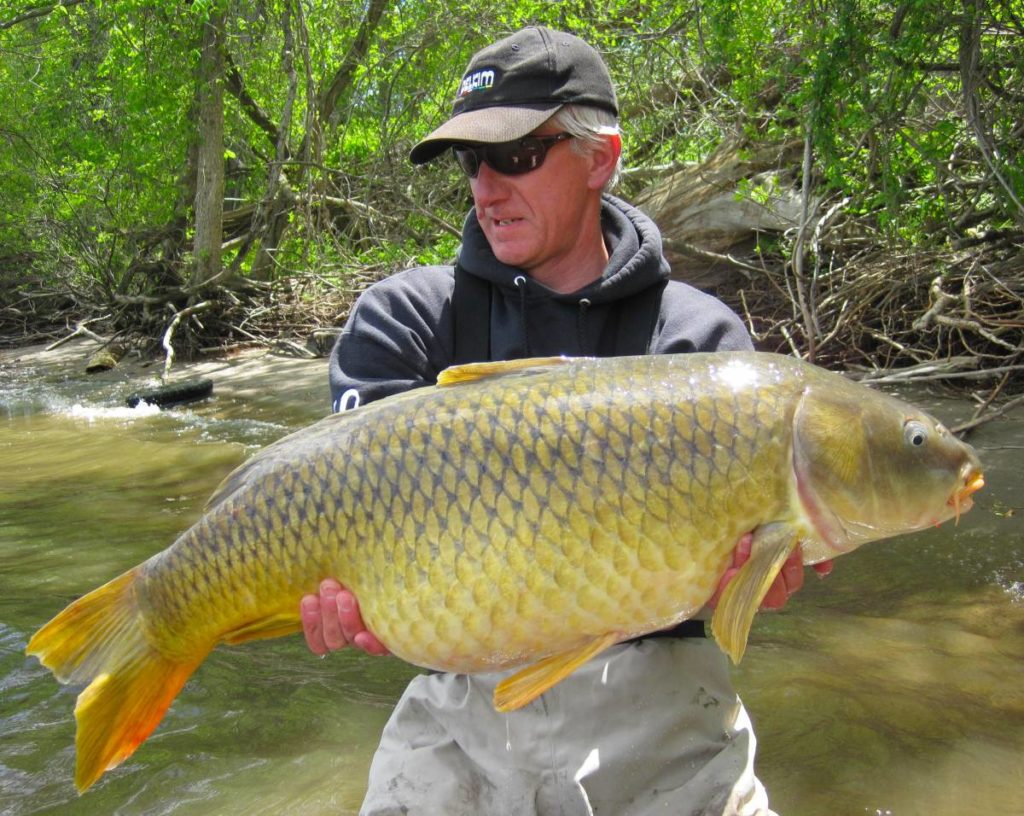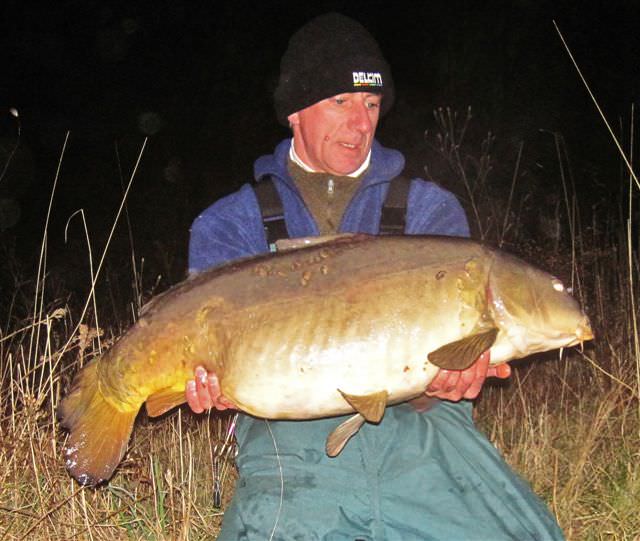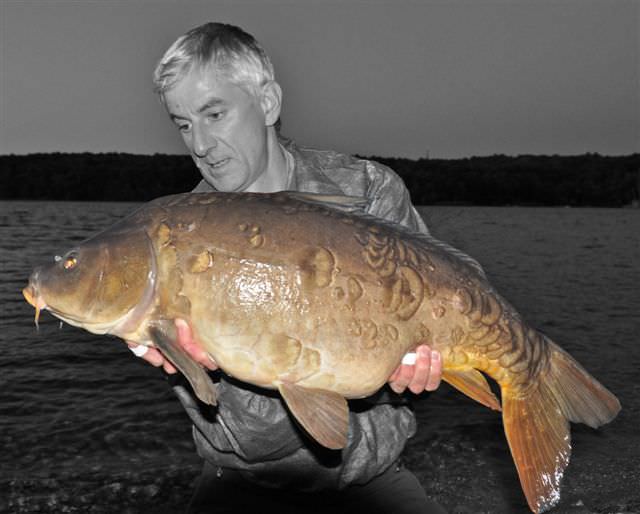The Basics.
When it comes to putting carp in the net there is nothing more important than what’s at the end of your line. And I’m not talking bait here. It simply does not matter if you have the tastiest of carp cuisine, or the finest rods, reels or every other piece of paraphernalia known to the carp world unless you have a properly tied hook rig. It seems that everyone has an opinion about which is the ‘best’ rig and more often it follows the latest fashion in carp trends or magazine articles. However my advice to anyone one just starting out in carp fishing would be to start with the most simple hair rig and play about with different hair and hook lengths. The lessons learned will be invaluable and will help as you move on to try more complex rigs. Of course don’t forget that the simplest rig is still a single hook tied directly to your mainline! This most basic set up is devastatingly effective for free lining hook baits such as naturals (crayfish, worms etc) particles (such as sweetcorn) or a piece of bread. As simple as this rig happens to be it also highlights two of the most important elements in creating ANY of the more complex arrangements… Hook sharpness and Knot reliability.
What’s the point?


The quality, sharpness and strength of modern carp hooks is truly remarkable. Perhaps the younger fishing generation will take this for granted but in years gone by it required hours spent sifting through boxes of hooks and carefully examining each one. Over deep cut barbs could lead to a broken point, rough edges or an opening around the eye a potential cut off and so on. Sorting through even the most trusted brands in the 70’s and 80’s would invariably lead to a significant pile of rejects. Now I cannot remember the last time I found a dodgy hook from any of the leading brands but that does not stop me checking each and everyone before it gets tied into a rig!
The same goes for hook point sharpness. Straight from the pack most hook points are now exceptional and will draw blood at the slightest provocation. However I still continue to check before tying a rig and ALWAYS, ALWAYS, ALWAYS each and every time before casting out a bait as a hook point can be quickly dulled rolling around the gravel of a river bed or bumping up against some other underwater object. While some folk will replace a hook or rig after every fish I’m happy to put aside that level of OCD behavior in favor of a thorough check and if necessary a couple of swipes with a diamond file to bring the point back to needle sharpness. A simple test by dragging the hook point across your finger nail will soon indicate if it is sharp enough by catching hold rather than slipping.
Tied up in Knots…
Knot tying is one of those fundamental skills that every angler should practice over and over until it truly becomes second nature. The results should be no less than perfect every time. While the choice of knots is simply overwhelming there is no need to learn any more than 4 or 5 at most for carp fishing. A ‘dry’ knot can appear tight and seem quite reliable when tested on the bank. But once in the water it can soon loosen and then slip while playing a fish. This is especially true with fluorocarbon or specialist co-polymer lines. So the most critical step in hook tying is to ‘wet’ the knot thoroughly before even attempting to draw it tight. Once you’ve created the knot and made sure all the loops and coils sit nicely, give it a generous coating in saliva (or use a knot lubricant) and ‘slowly’ tighten down while still making sure the coils still sit nice and neatly. Once it feels ‘finger’ tight, pull on the tag end and main line steadily to seat the coils and then use a tightening tool to make sure it is fully secure. If you really want to test your skills tie the knots while fishing in the darkness or blindfold. It might sound extreme but I promise you’ll soon get the ‘feel’ of doing it and make fewer mistakes in the long run. I’ve listed my favorites below and there are plenty of sites on the internet that give interactive demonstrations on how to tie them.
Uni-Knot (4 Turn) – Used for connecting main line to hooks, swivels etc. When using braid simply double the braid over and tie the same knot with double the turns. Unlike the Clinch or Improved Clinch knot the Uni-Knot tightens down without crimping the underlying main line.
Knotless or No-Knot – The preferred knot when making up hair-rigged hooks.
Figure-8 – Simple for making loops in hook lengths and creating hair loops.
Triple Over Hand or Surgeons – Ideal for making Loops in mono or fluoro main line.
Braid to Mono – The late and great Jose Wejbe shows you how!
History of the Hair-Rig.
 Until the early eighties carp had proven maddeningly adept at evading capture and only the truly dedicated achieved any consistent success at putting fish in the net with a bait mounted on the hook. I saw my first hair-rig in 1979 while fishing the legendary Savay with Mike Wilson (creator of the Baiting Pyramid). Mike came trotting down to my swim excitedly waving some sort of contraption. It consisted of a short 6lb mono hook length connected to a swivel and at the other end dangling from a #8 Au Lion D’Or hook was a bait suspended on a 2” length of 2lb mono. The concept was remarkably simple… unlike a baited hook the hair-rig allowed the carp to pick up and mouth the bait with out feeling the hook or mainline. It would then swallow the bait and in the process drag the hook into its mouth. At the time it was assumed that a carp would find it near impossible to eject a hair rigged bait and so it seemed (at least to begin with!).
Until the early eighties carp had proven maddeningly adept at evading capture and only the truly dedicated achieved any consistent success at putting fish in the net with a bait mounted on the hook. I saw my first hair-rig in 1979 while fishing the legendary Savay with Mike Wilson (creator of the Baiting Pyramid). Mike came trotting down to my swim excitedly waving some sort of contraption. It consisted of a short 6lb mono hook length connected to a swivel and at the other end dangling from a #8 Au Lion D’Or hook was a bait suspended on a 2” length of 2lb mono. The concept was remarkably simple… unlike a baited hook the hair-rig allowed the carp to pick up and mouth the bait with out feeling the hook or mainline. It would then swallow the bait and in the process drag the hook into its mouth. At the time it was assumed that a carp would find it near impossible to eject a hair rigged bait and so it seemed (at least to begin with!).

fishing Savay
To say the hair-rig revolutionized carp fishing would be an understatement. There was no longer any need to hover over the rods for hours waiting for the smallest bite indication (well so it seemed anyway) and then try to set the hook before the carp spat out the hook. Invariably the first indication with this new ‘rig’ was a screaming alarm with the line peeling off the reel and the carp firmly hooked. As a result carp fishing became a much more relaxed pursuit. There was now more time to snooze, grab a bite to eat or even socialize over a cup of tea with a mate. Over the intervening years the ‘hair-rig’ first created by Lennie Middleton has evolved with many intriguing designs together with the use of modern hook length materials, rubber beads, swivels and rig rings. While the hair-rig is devastatingly effective most carp anglers would still be amazed at how often a feeding carp can pick up and spit one out without being hooked. Understanding the ‘mechanics’ of each rig and setting it up properly to match the river or lake bed together with the chosen bait is critical to maximizing its effectiveness.
Simple Hair-Rig
Although it does not quite go back to the roots of the original hair-rig it is perhaps even simpler to tie. A small loop for the hair stop and then a ‘No-Knot’ around the hook and it’s done! This simple rig has been the downfall of thousands of carp of all sizes. Over the years it has formed the foundation to create ever more effective rigs with a wide choice of hook link material and the addition of some shrink tube, rig rings etc. It is quite simple to determine the required hair length depending on the type and number of baits being used and if you allow 1/4 – 1/2 inch of space between bend of the hook and the bait you will not go far wrong.
The use of a “line aligner” using a piece of shrink tube (or one of the new ready made items) will improve the mechanics significantly and makes this simple rig even more effective!

on a basic hair rig… deadly!

Simple and Easy to use
How to tie the No-Knot Hair Rig.
 Hook Style: Turned in or Straight eye hook.
Hook Style: Turned in or Straight eye hook.
Hook Link Material: Almost any braid material or mono material.
Bait: Everything… boilies, particles, plastics. They all work.
Ease of Tying: ***
Buoyant Baits…

If you want to ‘pop’ the bait up then its simple to thread on a piece of foam or cork together with your chosen bait and then position a split shot or tungsten putty on the hook length until the bait is suspended 1-2″ off the bottom as required. This can make the hook bait more attractive and visible, especially when fishing over a bed of chum. It can also keep the hook rig clear of any weed or leaves littering the bottom. Another option is to chose from the wide range of plastic imitation baits available in a wide range of realistic shapes, colors and sizes. They also include buoyant options which makes them ideal for creating pop-up baits. You can fish them on their own, in combination with the real thing or dip them in your favorite flavor… either way carp love them!
Hook Length Materials
 The range of materials available today is fantastic! Soft, stiff, semi stiff, strippable, monocore braids – its all there. If you are just learning the ‘ropes’ then a simple hair-rig tied with 15-30lb braid is all that you need to start catching carp, especially here in North America. However it usually doesn’t take long before you want to try some of the more sophisticated rigs especially if you plan to focus more on bigger fish. The choice of materials will depend on a number of factors including water clarity, depth, bottom structure etc. A supple braid will hug the contours of the bottom and offer little resistance when a carp picks up the bait but can be more prone to tangles. In clear, shallow conditions a fluorcarbon hook line will all but disappear and if you want to get really serious about camoflage then there are now hook links that look like strands of weed. My own preference is for the growing range of combination materials. Some have a fluorocarbon monocore inside a hollow braid but perhaps the easiest to use are the braids coated with a plastic layer. This coating can be stripped off to reveal the supple braid underneath. This makes it easy to create so called ‘combi’ rigs where there is a stiff anti-tangle section and a supple part that allows unhindered movement of the hook to enhance the effectiveness of the bait presentation.
The range of materials available today is fantastic! Soft, stiff, semi stiff, strippable, monocore braids – its all there. If you are just learning the ‘ropes’ then a simple hair-rig tied with 15-30lb braid is all that you need to start catching carp, especially here in North America. However it usually doesn’t take long before you want to try some of the more sophisticated rigs especially if you plan to focus more on bigger fish. The choice of materials will depend on a number of factors including water clarity, depth, bottom structure etc. A supple braid will hug the contours of the bottom and offer little resistance when a carp picks up the bait but can be more prone to tangles. In clear, shallow conditions a fluorcarbon hook line will all but disappear and if you want to get really serious about camoflage then there are now hook links that look like strands of weed. My own preference is for the growing range of combination materials. Some have a fluorocarbon monocore inside a hollow braid but perhaps the easiest to use are the braids coated with a plastic layer. This coating can be stripped off to reveal the supple braid underneath. This makes it easy to create so called ‘combi’ rigs where there is a stiff anti-tangle section and a supple part that allows unhindered movement of the hook to enhance the effectiveness of the bait presentation.
Follow the Leaders?

Easy to Use
The simplest connection to your hook length is your mainline. However there are some draw backs… with this set up your lead will be sliding up and down the mainline and can cause it to twist and tangle. Also if you are using braid the thin diameter can lift and damage scales while playing a fish. A neat solution to this problem is the use of Anti-Tangle tubing. This is a 2-4’ length of thin plastic tube through which the main line passes. It usually connects to the back of the lead weight or the leader swivel. Alternatives also include leadcore material which also helps ‘pin’ the line to the bottom so that fish do not ‘bump’ into the mainline and create false indications or get spooked. My preference is to choose anyone of a number of the modern ready made leaders that come pre-looped and eliminate the need to spend ages trying to thread the line down the middle of anti-tangle tube! Most include a swivel to attach the hook length and it’s very simple to pull the leader through a lead or lead clip using a baiting needle. The choices include Clear, Camoflage and Weighted versions as well as ready made Helicopter rig versions.
Next Installment…
In Part II I’ll explore in more detail the rigs that have worked well for me here in North America and later in Part III how to fine tune your rigs to make sure they work optimally.
http://bigcarpnews.com/web/carp-rigs-part-ii/











